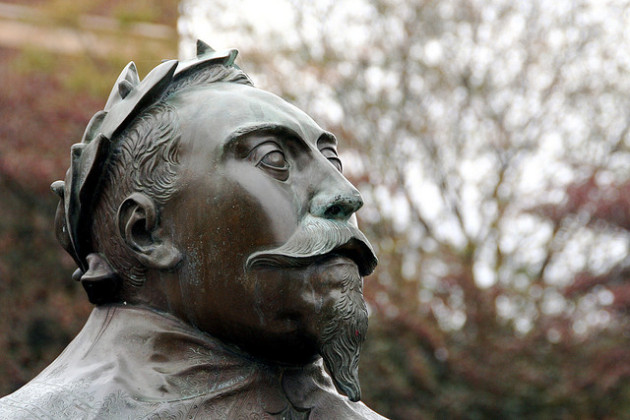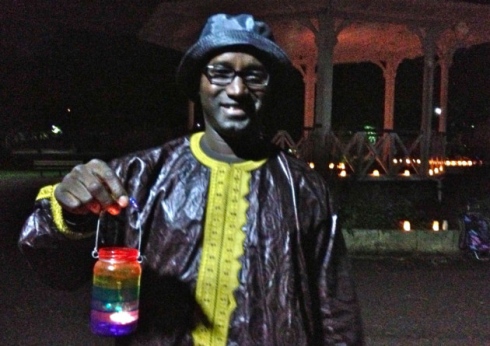Minnesota Campus Tackles Hate & Bias After Vandalism Targets Student
 As fall ushers in the new school year, most new college students are thinking about unpacking, registering, and making new friends. But one student at Gustavus Adolphus College in St. Peter, MN was greeted with an ethnic slur alongside their name spraypainted outside the dorm. Not waiting for an identified suspect, the college administration recognized the incident as a hate crime.
As fall ushers in the new school year, most new college students are thinking about unpacking, registering, and making new friends. But one student at Gustavus Adolphus College in St. Peter, MN was greeted with an ethnic slur alongside their name spraypainted outside the dorm. Not waiting for an identified suspect, the college administration recognized the incident as a hate crime. Campus organizations moved swiftly to respond to the incident and reaffirm the campus mission to be a safe and inclusive place for all students. “We heard an outcry from our community that this isn't us,” said Glen D. Lloyd, assistant director of Multicultural Student Programs & Services.
The Student Senate issued a resolution of compassion and support. A community forum was also held, for members to speak about how they were affected and what can be done to prevent future incidents. The Diversity Leadership Council issued a statement of concern. “This is not the only time that we have seen or heard hateful expressions on our campus,” the letter said. According to the Gustavian Weekly, many students wanted more information on the incident, and sought greater transparency from the administration in the future.
Looking forward, Gustavus Adolphus is wrestling with the question of how to develop a hate-free campus. “Outside of the classroom, change has to come from the students themselves. Positive energy is key. It has a great effect on the community and defines the college experience,” said English professor Phil Bryant. “You guys have to take charge.”
Perhaps best embodying Bryants’ advice is the statement released by the crime’s target: “I am the victim of the hate crime that happened here on our beautiful campus, and I want you all to know that I love you as individuals and Gustavus as a place. This event has dramatically hurt me and wounded me in a way that I never thought possible, but the people of this institution have helped me. … Now to the individual or group that perpetrated this crime against me. I want you to know that I love you for all of your faults. Even for all of the pain that you have caused me, I still recognize that you are a human being as well.”
Hate Crime Awareness Week Spark Vigils, Pledges and Events Worldwide
 Communities worldwide came together for Hate Crimes Awareness Week last week, gathering locally to educate, offer support, and remember hate crime victims. Spanning from Oct. 12-19, Hate Crimes Awareness week started as a way to encourage local people to report hate crimes, as well as promote existing resources and services for those affected by hate crimes, according to the UK-based organization 17-24-30, whose namesake refers to dates of bomb attacks targeting Black, Asian and Gay communities in the UK.
Communities worldwide came together for Hate Crimes Awareness Week last week, gathering locally to educate, offer support, and remember hate crime victims. Spanning from Oct. 12-19, Hate Crimes Awareness week started as a way to encourage local people to report hate crimes, as well as promote existing resources and services for those affected by hate crimes, according to the UK-based organization 17-24-30, whose namesake refers to dates of bomb attacks targeting Black, Asian and Gay communities in the UK. In the town of Norfolk, local organization Hate Free Norfolk held a vigil in remembrance of all hate crime victims. “We think everyone has the right to live in a hate-free Norfolk, and we are developing a Hate Free Norfolk Pledge that everyone can sign up to and show their support. We really want people to feel able to report hate incidents and to seek support and advice if they are victims,” said Michelle de Oude, chairman of Hate Free Norfolk
University of San Diego also sponsored a week of activities to raise awareness, including an open mic, a candlelight vigil and march, an allies training, and a gallery show.
Survivor of Racist Serial Killer Learns to Heal
 When struck by trauma so severe, recovery may seem impossible. This was the case for Terry Jackson-Mitchell, who survived a sniper attack by racist serial killer Joseph Paul Franklin in 1980. Mitchell, who is white, was jogging with two black friends who were gunned down by Franklin in Salt Lake City. “Their families blamed us,” Jackson-Mitchell said. “I wasn’t allowed to go to the funeral. I was alive and they were dead.” There were rumors of a set-up, and racial hostility flared around Mitchell. People judged her for mixing in the first place, saying it was her fault, according to the Southern Poverty Law Center Hatewatch Blog.
When struck by trauma so severe, recovery may seem impossible. This was the case for Terry Jackson-Mitchell, who survived a sniper attack by racist serial killer Joseph Paul Franklin in 1980. Mitchell, who is white, was jogging with two black friends who were gunned down by Franklin in Salt Lake City. “Their families blamed us,” Jackson-Mitchell said. “I wasn’t allowed to go to the funeral. I was alive and they were dead.” There were rumors of a set-up, and racial hostility flared around Mitchell. People judged her for mixing in the first place, saying it was her fault, according to the Southern Poverty Law Center Hatewatch Blog.Mitchell is just one of the estimated 20-plus targets of Franklin’s killing spree. In the midst of all the details and grim memories, Mitchell has persevered, refusing to be defined by one terrible moment. Diagnosed with Post-Traumatic Stress Disorder, Mitchell tried to keep her painful past a secret. But through the process of testifying against Mitchell, and speaking publicly against racism, she has learned to identify as a survivor, not a victim. She has also reconciled with the family of her slain friends.
As Franklin is scheduled to be executed on Nov. 20, Mitchell has been using art to help her deal with the trauma of her past. Collecting newspaper clippings from the trial, she created a paper mask to represent all that she had been keeping inside. “I went back to where we were shot on the anniversary again this year and I didn’t feel sad,” she said. “I felt healed. I didn’t have the flashbacks I normally have. I think the art helps me find the voice of that 15-year-old girl I tried to bury alive. I think the art helped her be heard.”